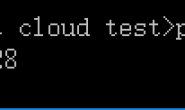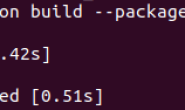用python来备份目录
#!/usr/bin/python # Filename: backup_ver1.py import os import time # 1. The files and directories to be backed up are specified in a list. source = ['/home/swaroop/byte', '/home/swaroop/bin'] # If you are using Windows, use source = [r'C:\Documents', r'D:\Work'] or something like that # 2. The backup must be stored in a main backup directory target_dir = '/mnt/e/backup/' # Remember to change this to what you will be using # 3. The files are backed up into a zip file. # 4. The name of the zip archive is the current date and time target = target_dir + time.strftime('%Y%m%d%H%M%S') + '.zip' # 5. We use the zip command (in Unix/Linux) to put the files in a zip archive zip_command = "zip -qr '%s' %s" % (target, ' '.join(source)) # Run the backup if os.system(zip_command) == 0: print 'Successful backup to', target else: print 'Backup FAILED'
输出
$ python backup_ver1.py Successful backup to /mnt/e/backup/20041208073244.zip
备份脚本2
#!/usr/bin/python
# Filename: backup_ver2.py
import os
import time
# 1. The files and directories to be backed up are specified in a list.
source = ['/home/swaroop/byte', '/home/swaroop/bin']
# If you are using Windows, use source = [r'C:\Documents', r'D:\Work'] or something like that
# 2. The backup must be stored in a main backup directory
target_dir = '/mnt/e/backup/' # Remember to change this to what you will be using
# 3. The files are backed up into a zip file.
# 4. The current day is the name of the subdirectory in the main directory
today = target_dir + time.strftime('%Y%m%d')
# The current time is the name of the zip archive
now = time.strftime('%H%M%S')
# Create the subdirectory if it isn't already there
if not os.path.exists(today):
os.mkdir(today) # make directory
print 'Successfully created directory', today
# The name of the zip file
target = today + os.sep + now + '.zip'
# 5. We use the zip command (in Unix/Linux) to put the files in a zip archive
zip_command = "zip -qr '%s' %s" % (target, ' '.join(source))
# Run the backup
if os.system(zip_command) == 0:
print 'Successful backup to', target
else:
print 'Backup FAILED'
输出
$ python backup_ver2.py Successfully created directory /mnt/e/backup/20041208 Successful backup to /mnt/e/backup/20041208/080020.zip $ python backup_ver2.py Successful backup to /mnt/e/backup/20041208/080428.zip
备份脚本3
#!/usr/bin/python
# Filename: backup_ver4.py
import os
import time
# 1. The files and directories to be backed up are specified in a list.
source = ['/home/swaroop/byte', '/home/swaroop/bin']
# If you are using Windows, use source = [r'C:\Documents', r'D:\Work'] or something like that
# 2. The backup must be stored in a main backup directory
target_dir = '/mnt/e/backup/' # Remember to change this to what you will be using
# 3. The files are backed up into a zip file.
# 4. The current day is the name of the subdirectory in the main directory
today = target_dir + time.strftime('%Y%m%d')
# The current time is the name of the zip archive
now = time.strftime('%H%M%S')
# Take a comment from the user to create the name of the zip file
comment = raw_input('Enter a comment --> ')
if len(comment) == 0: # check if a comment was entered
target = today + os.sep + now + '.zip'
else:
target = today + os.sep + now + '_' + \
comment.replace(' ', '_') + '.zip'
# Notice the backslash!
# Create the subdirectory if it isn't already there
if not os.path.exists(today):
os.mkdir(today) # make directory
print 'Successfully created directory', today
# 5. We use the zip command (in Unix/Linux) to put the files in a zip archive
zip_command = "zip -qr '%s' %s" % (target, ' '.join(source))
# Run the backup
if os.system(zip_command) == 0:
print 'Successful backup to', target
else:
print 'Backup FAILED'
输出
$ python backup_ver4.py Enter a comment --> added new examples Successful backup to /mnt/e/backup/20041208/082156_added_new_examples.zip $ python backup_ver4.py Enter a comment --> Successful backup to /mnt/e/backup/20041208/082316.zip




